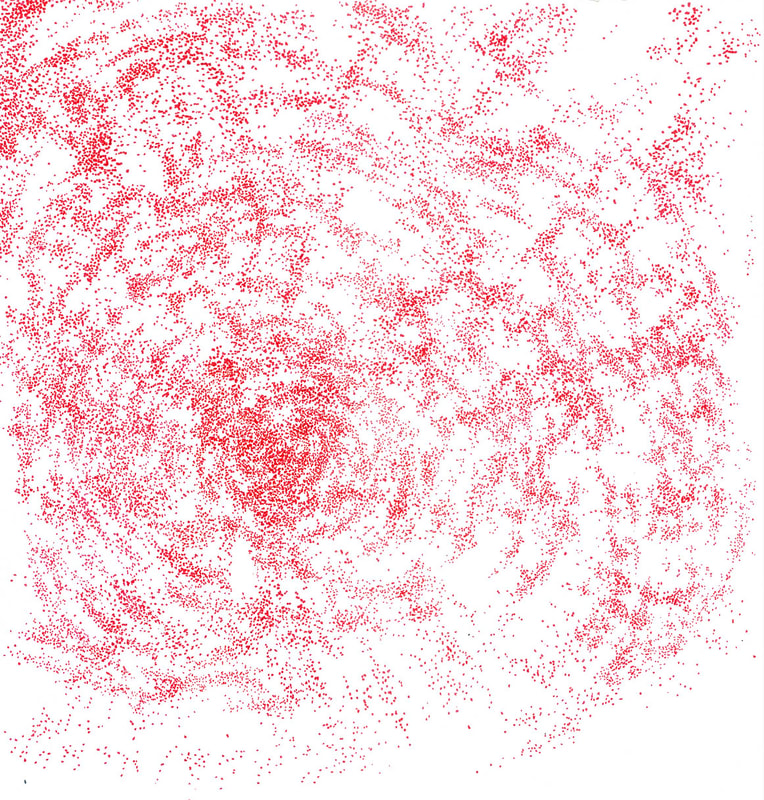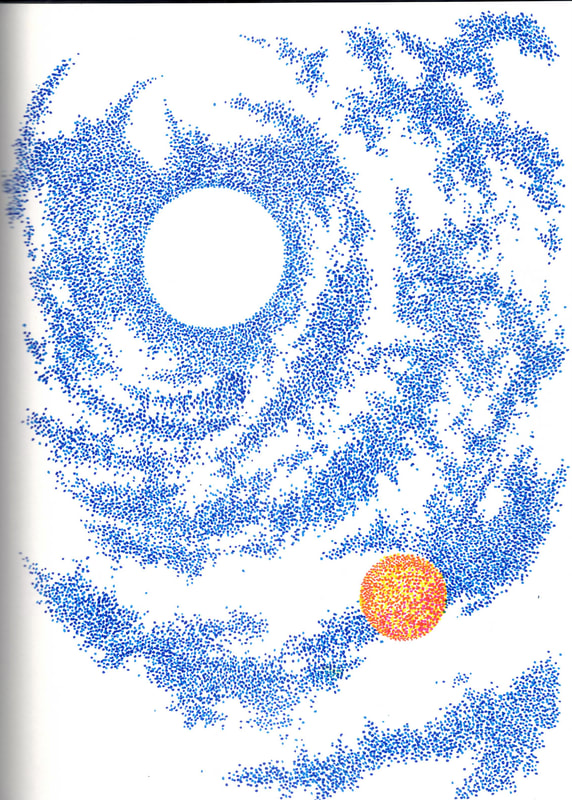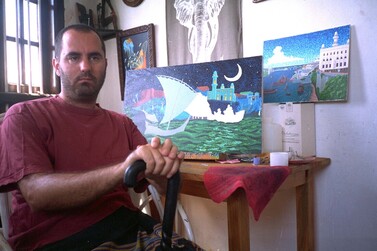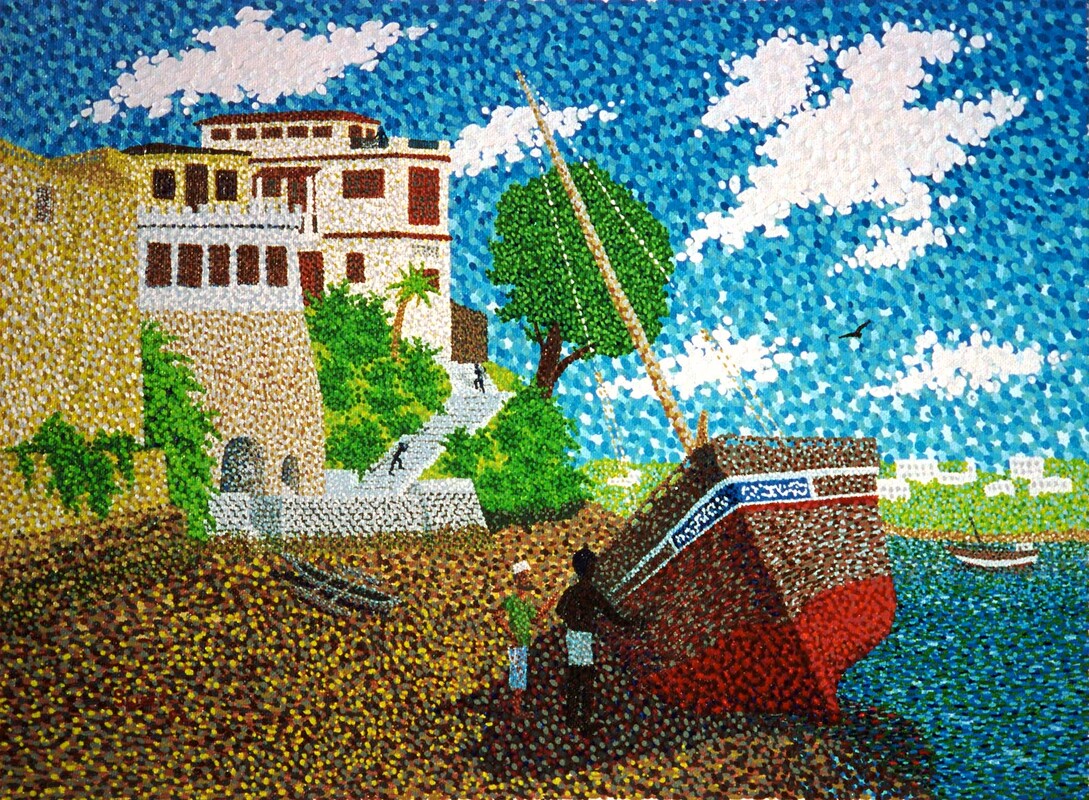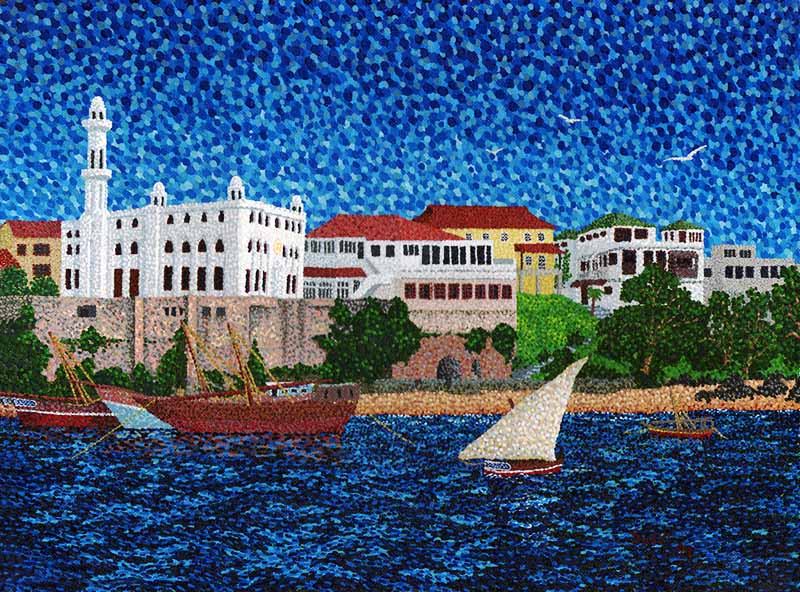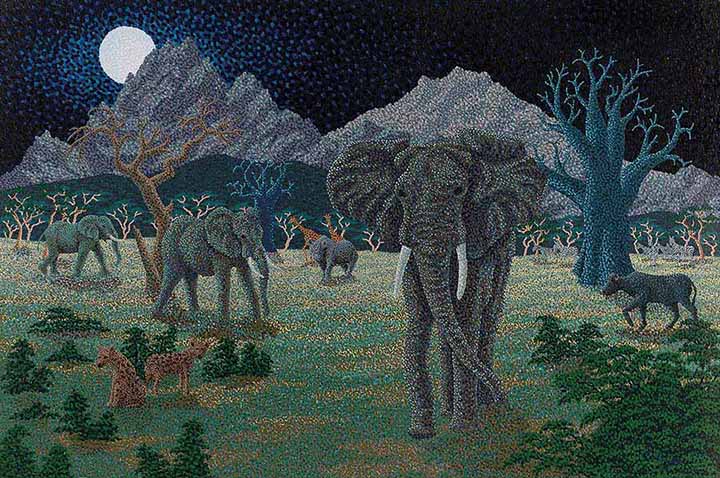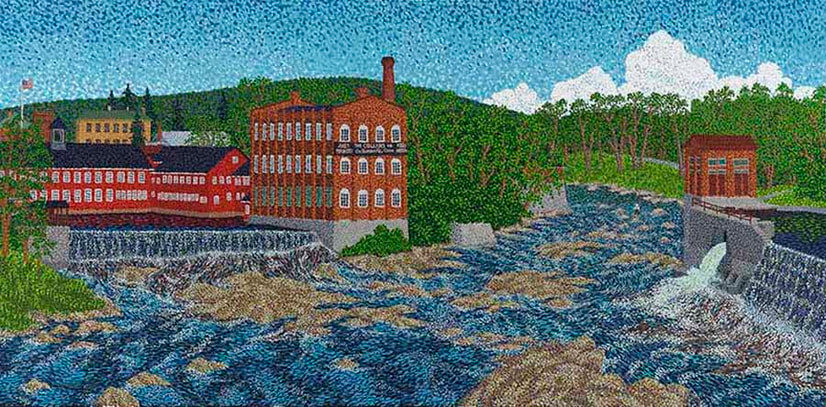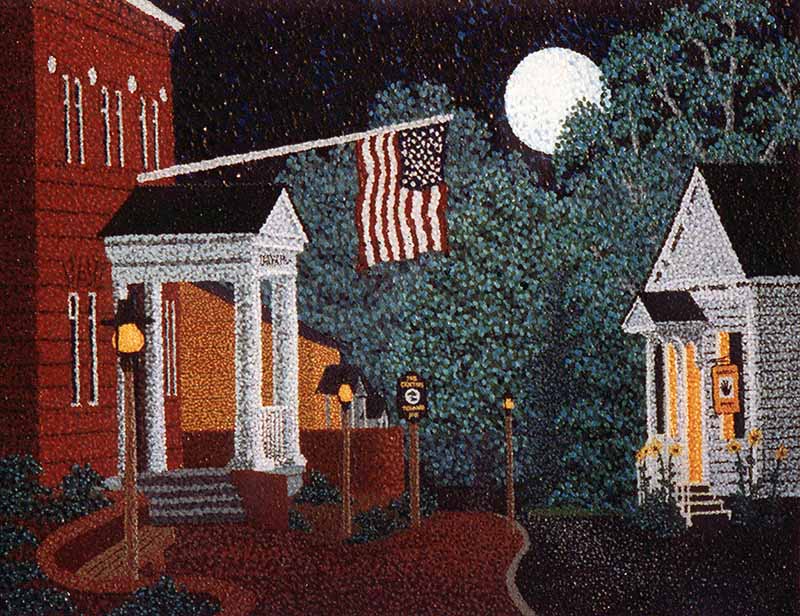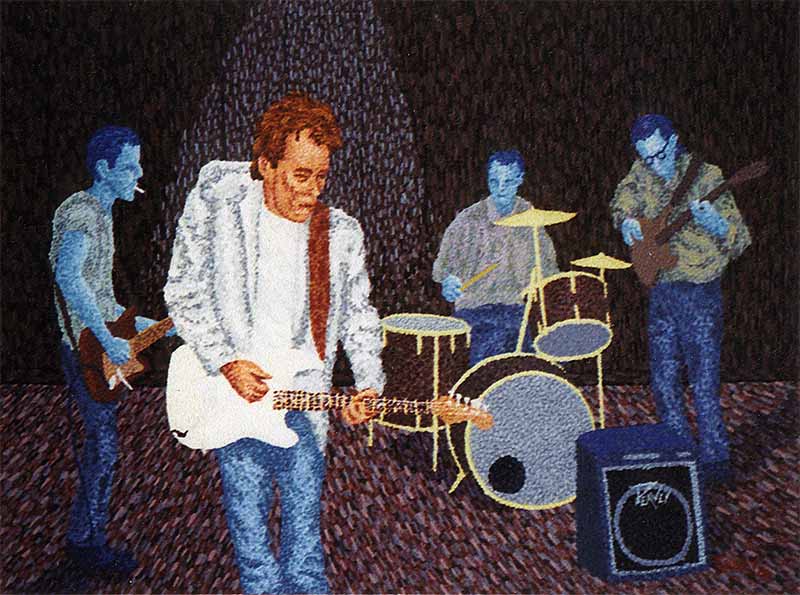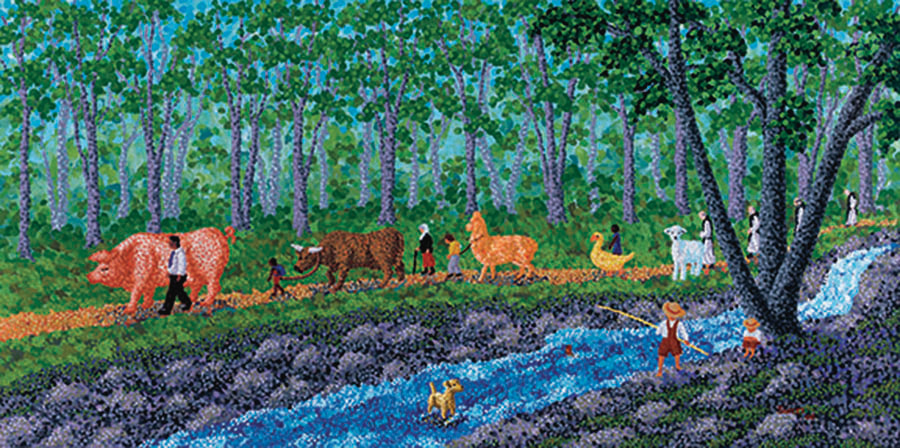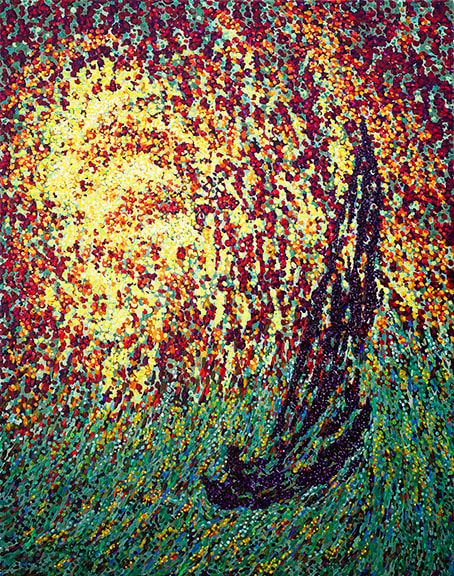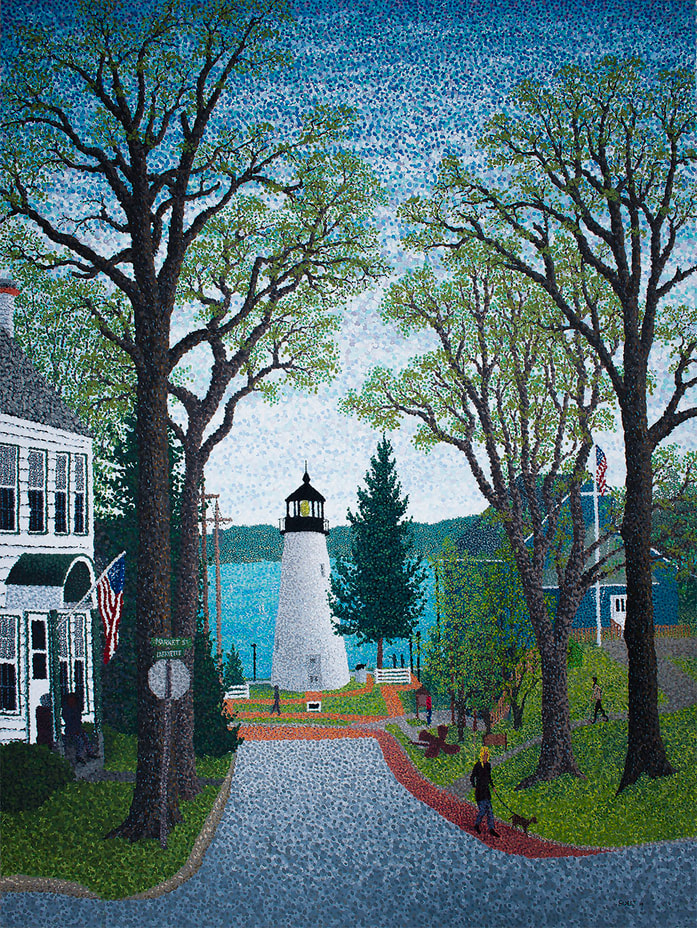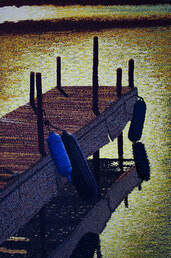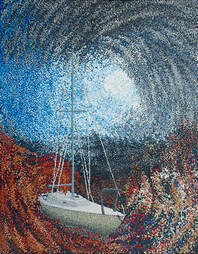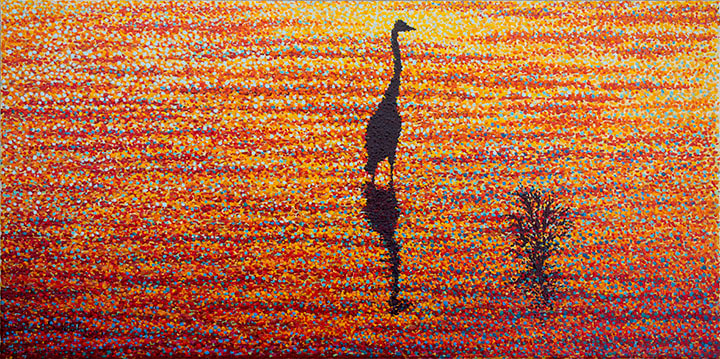History and Michael
|
Subjective matter crept in early, usually a figure before a background of vortices and spheres. But there was an occasional landscape, or a portrait of a friend’s house. Landscapes and people didn’t become regular subject matter until my third year of painting. By that time, I had completed around 40 paintings.
|
I feel my art didn’t really kick in until I went to Africa. I don’t know if it was the environment that I was in, or the fact that I didn’t paint at all during the first year that I was there. But after a friend sent me paint, brushes and canvas boards, I discovered that painting was no longer an avocation, but a vocation.
I went to Kenya as a Peace Corps volunteer in 1992. The economy had turned south, and as an independent software developer I was having difficulty competing with fourteen year olds who were programming in their parent’s basement. But the truth of the matter, a truth that I came to realize during a long drive from New York to Texas, I spent far too much time painting, time that would have been better used (professionally speaking) learning new skills. I looked at the economic downturn as an opportunity to fulfill a youthful dream to join the Peace Corps. They sent me to Mombasa, where I lived for the next two years.
|
I lived in small flat, probably less than a couple hundred square feet in size. But it had running water (cold), and a European toilet. But most significant for me, it overlooked the old harbor. Waves lapping against the foundation of my building lulled me to sleep each night.
|
I painted street scenes of Mombasa’s Old Town, the dhows in the old harbor, but most often the Badri mosque, which is the subject of the only painting I’ve ever done from life.
|
Collinsville in 1996 was the home of a shuttered axe factory, Gertrude & Alice’s Coffee house, and a community of artists; none of which I was aware of until after I had moved there.
I moved to Connecticut to work for a dynamic software company specializing in children’s interactive titles. My years in Collinsville had a profound impact upon me. I found incredible support for my art, and a partner for my life.
|
Paintings of vortices and spheres were now part of my past. And gradually my style began to relax. Although it still took a tens of hours to complete many of my paintings, I was beginning to loosen up.
|
A few years later, Collinsville was discovered to be a wonderful place to live, half of the artists moved away, and G&A’s closed. We, too, moved on, to the next town over, Farmington. By this point I had paintings and prints in a few nearby galleries. I am still inspired by New England.
My style has evolved since painting vortices and spheres 30 years ago. I layer dots upon dots which can give my paintings a texture and depth, but also results in completing a painting in half or even a third the time it once took. Still, I feel very productive if I finish between 20-30 paintings a year.
Synopsis
|
The first dot of paint spurs a moment of reflection. The genesis of my art hinges on an experience nearly 40 years ago that hints at the metaphysical. It is why I am a pointillist.
I was 24, in college, at the end of the semester. The Iranian hostage crisis had just begun. I was lying down from the stress of world events and preparing for finals, listening to Beethoven’s 7th, 2nd movement. A sensation of calm settled upon me. A field of stars swirled before my eyes, creating a spiraling vortex which then began to swallow itself. An instant before it concluded, I sat up and said, “Damn, I missed it.” I might have said that out loud. Painting has been my way to understand the vortex. The dots in my paintings represent particles of reality. Paint numerous dots and it looks like chaos. Add more and images form. Out of chaos comes clarity. These images, the subjects of my paintings, are a Veil of Illusion, what the Hindus call Maya. Maya has varying references. My own understanding guides my painting; that material form does not reveal hidden meaning. From the beginning, my dots have been connected with that mystical exposure. With any given painting, I create a composition from those dots. |
And what does the viewer perceive? A mariner, struggling against the force of nature? A flock of geese reposing on the edge of a bay, amid a foggy morning? These perceptions are real, but they are not the paintings’ true nature. A painting offers multiple emotional views, firing up the imagination with stories. Look closely, and see the structure of dots. Lean back, and the story awakens in the genius of the viewer.
I am a pointillist, applying a fairly uncommon technique. But even among the limited practitioners, my work is sui generis. I layer dots upon dots, imbuing the canvas with a whorl of textured dots across the surface. I am forever on the cusp of lifting that veil, the original stars of the vortex. I crave resolution, to reach the elusive revelation of that whirlwind of stars I missed long ago. When I complete a painting, and it works, I can stare at it for hours. It breathes in me a memory of my esoteric incident. It taunts me to explore further. In time, perhaps, I will recapture that occurrence. I may even paint it. |
Get in touch
Thank you for visiting! What do you think of paintings on the website? I paint boat commissions, if you're interested. Tell me how I can assist you. Contact us!
